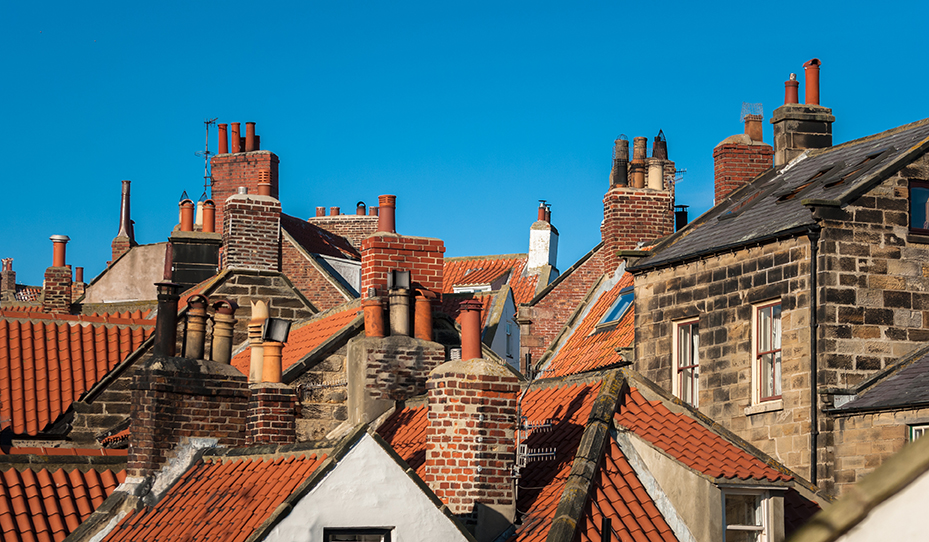When autumn arrives and the weather begins to cool, many people turn to their fireplaces for warmth. Using fireplaces and chimneys for heat without first maintaining and examining them can be dangerous – even deadly – after months of inactivity.
Because fireplaces and chimneys are often left unused during the summer, it is critical to have your chimney swept and inspected by a licensed professional on a regular basis to ensure that it is safe to use.
Plan Insurance can accommodate your Property Owners & Landlord Insurance needs. Just fill in our short online quote form, and our professional brokers will be in contact to arrange your insurance.
Risks of Chimney Fires
Chimney fires are dangerous. Temperatures can reach 1,100°C, and radiant heat is emitted through the chimney walls, posing a serious threat to structures with wooden or thatched roofs. Chimney bricks can get hot enough to catch fire, igniting nearby flammable items like thatch or wood goods.
Chimney fires usually occur for four main reasons:
- Infrequent sweeping and cleaning
- Burning unseasoned wet wood
- Improper sizing of the appliance
- Burning or smouldering wood in wood burners for long periods or overnight
Failure to maintain and inspect your chimney on a regular basis could result in a terrible fire that destroys your entire structure. You may lose your home if you are a private homeowner. If you are a landlord, you may be responsible for organising chimney maintenance and, as a result, you may be held liable for any fires that occur as a result of poor chimney maintenance and safety.
Related article: Plan’s Property Risk Insights… Landlord Winter Weather Liabilities

The winter months bring more than simply frigid temperatures, shorter days, and ice and snow storms. Snow and ice can pose a concern to property managers and landlords, with the possibility for financial liability.
Sweep Your Chimney and Check Your Flues
To remove deposits left over after burning carbon-based fuels including wood, gas, oil, and smokeless fuels, your chimney and flue should be swept. Chimney sweeping guarantees that the gases released by your fireplace have a safe and clear passage, lowering the risk of a chimney fire. Sweeping a chimney also eliminates things that could hinder air passage, such as nests, cobwebs, and loose or cracked masonry.
Chimney sweeping reduces the risk of a chimney fire by ensuring a safe and clean passage for the gases released by your fireplace.
Because carbon monoxide is formed when carbon-based fuels are burned, if chimneys and flues are not swept and examined on a regular basis, they can cause carbon monoxide poisoning. The fuel will not burn as efficiently if your chimney or flue is not clean, and deadly levels of carbon monoxide will build up. This poisonous gas can escape from the chimney and poison those who are nearby.
It is critical to keep your chimney and flue clean in order to prevent fires from starting. Follow these guidelines to maintain your chimney and flue clean and safe throughout the year:
- Sweep the chimney regularly.
- Only burn wood with a low moisture content.
- Use an appropriately sized appliance for the room with the fireplace.
- Do not overload the grate or appliance.
- Build smaller, hotter fires that burn completely – they produce less smoke.
- Never burn cardboard boxes or waste paper in the fireplace.
Detecting a Chimney Fire
Chimney fires are extremely deadly, but there are some warning signs and symptoms that can help you spot one before it spreads and does significant damage. The following are some of these indications and symptoms:
- A loud roaring noise from the fireplace opening.
- Sparks and flames shooting from the chimney top, resembling fireworks.
- A glowing or shimmering outlet or connector.
- Flames visible through tiny cracks in the outlet or connector.
- A vibrating appliance, outlet or connector.
- Noticeable smoke or smells in adjoining rooms or the loft space.
Unfortunately, a chimney fire can occur even if none of these signs are present, which is why routine maintenance is so vital.
If you have a chimney fire, contact the fire department right once. Following these four steps after phoning the fire service:
- If the fire is in a wood-burning stove, shut all air vents and flue dampers to reduce the fire’s oxygen supply. Do not pour water on the fire.
- Move any flammable materials, furniture or decorations away from the fireplace.
- Check if the chimney breast throughout the house is getting hot. If so, move furniture away from it.
- Clear the area around the fireplace and chimney so firefighters can access it.
If you do not feel safe inside, simply leave building.
After a chimney fire has been extinguished, a certified chimney sweep should inspect the chimney as quickly as feasible. Use the chimney only after it has been thoroughly inspected and any necessary repairs have been done.
Maintenance Saves Lives
It’s easy to keep up with prescribed chimney and flue maintenance throughout the year and after extended periods of inactivity. You can rescue a building from going up in flames with only a few instances of simple, routine maintenance – and you might even save someone’s life.


